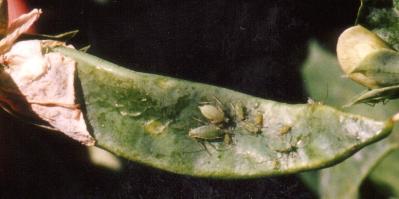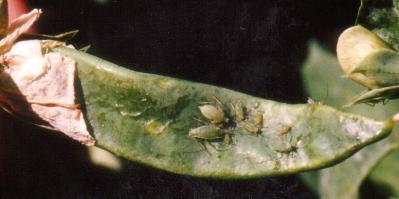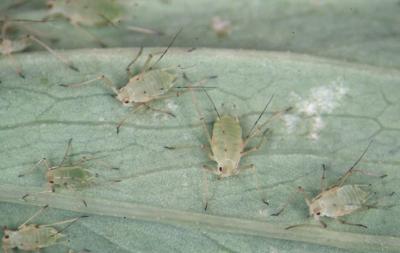


Main aphids in Africa: Black bean aphid ([i]Aphis fabae[/i]), Cabbage aphid ([i]Brevycoryne brassicae/Myzus persicae[/i]), Groundnut aphid ([i]A.craccivora[/i]), Cotton aphid ([i]A.gossypii[/i]), Russian wheat aphid ([i]Diuraphis noxia[/i]), Cypress aphid ([i]Cinara cupressi[/i])
Aphids
Aphids are serious pests of peas. The pea aphid (Acyrthosiphon pisum), the cowpea aphid (Acyrthosiphon pisum), and Myzus sp. (Aphis carccivora), are found on young leaves and growing points.
They suck sap from leaves, stems, blossoms and pods. Feeding by aphids causes leaf distortion and wilting. Heavily infested plants are stunted and produce fewer and smaller pods and seeds. The pea aphid may also transmit viruses such as pea enation mosaic virus, pea streak virus and pea leaf roll virus. Parasitic wasps and predators (hoverflies and ladybird beetles) are important for natural control of aphids.
- Parasitic wasps and predators (hoverflies and ladybird beetles) are important for natural control of aphids. Encourage natural enemies by interplanting peas with plants such as maize, which are host for aphids that do not attack peas, but allow predators to build up.
